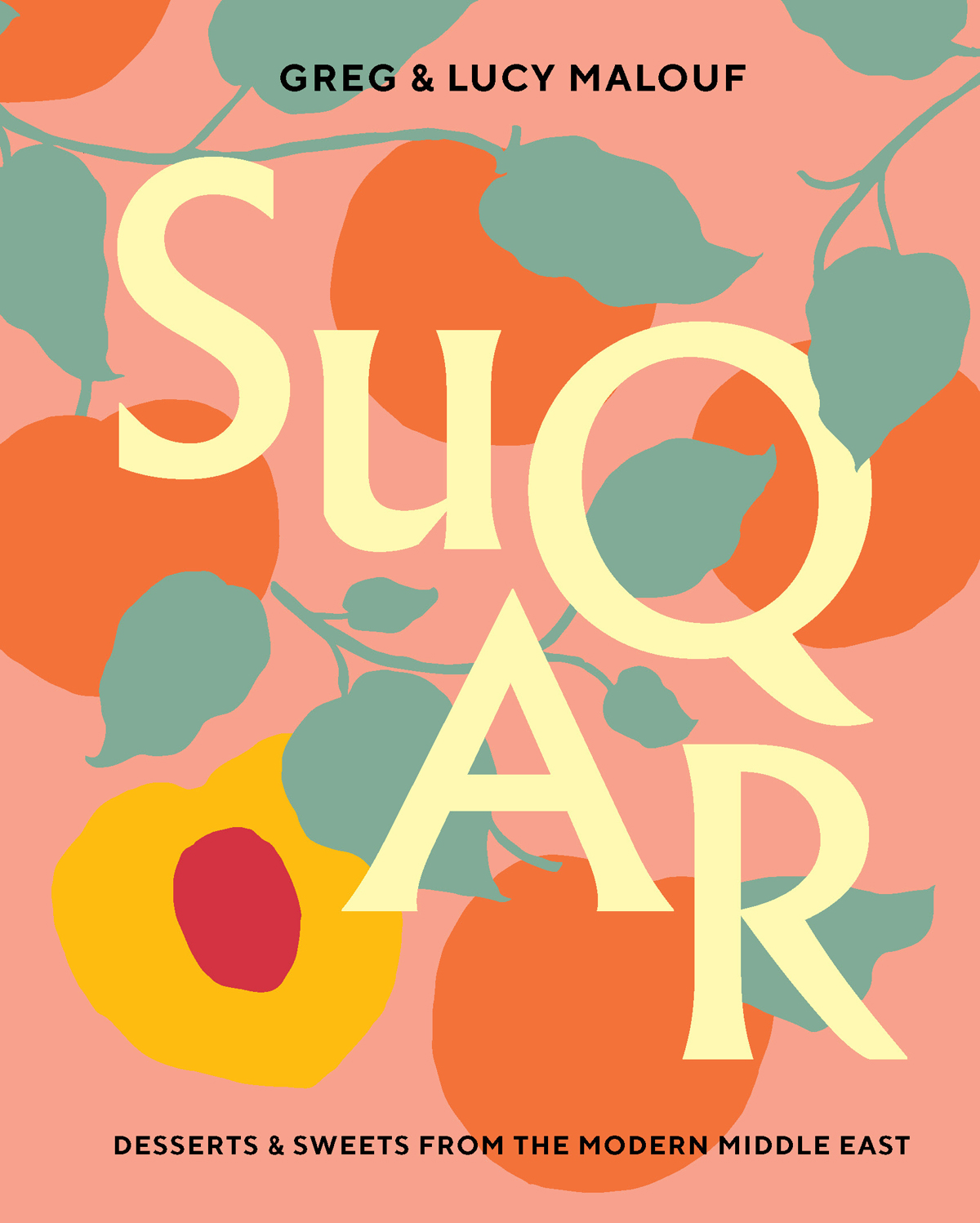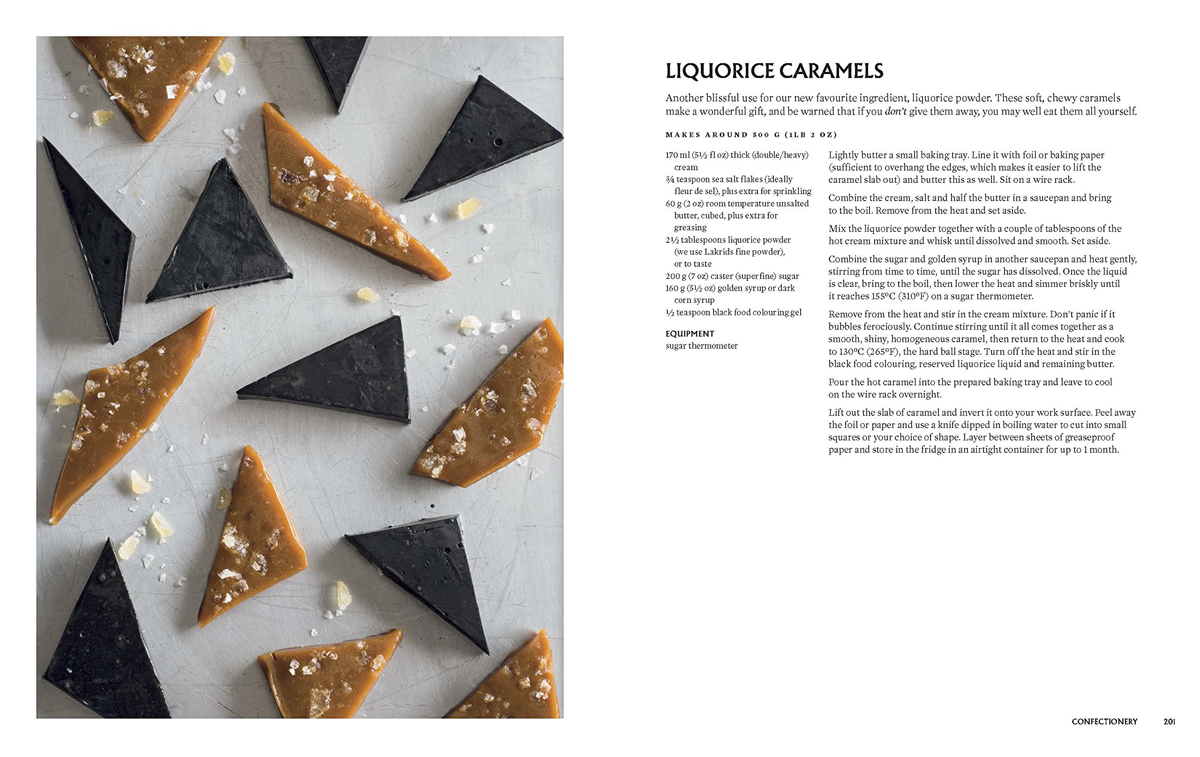On Friday, April 26, the James Beard Foundation held its 2019 Media Awards ceremony, for cookbooks and other non-fiction food- or beverage-related books that were published in the U.S. in 2018. The winner in the Baking and Desserts category was SUQAR: Desserts & Sweets from the Modern Middle East, by Greg and Lucy Malouf.
The Malouf’s book, released in November of 2018, shares the secrets of more than 100 sweet treats inspired by Middle Eastern flavors. Everything from puddings and pastries, to ice creams, cookies, cakes, confectionary, fruity desserts, and beverages is covered.
The recipes merge the spices, flavors, and scents of Greg’s unique Lebanese-Australian childhood with Western influences to create dishes in a signature modern Middle Eastern style.
We recently spoke with Greg and Lucy Malouf about the book’s origins and what distinguishes Middle Eastern sweets.
What sets Middle Eastern sweets apart from others around the world?
GREG: Well, first of all, it’s important to recognize that the Middle East is a vast region, and encompasses a range of different food cultures: Moorish Spanish or North African cooking are different from Turkish, which is different from Arabic, which is different from Persian… although there are common threads which link them all, which is one of the things Lucy and I love exploring in all our books.
The repertoire of Middle Eastern sweet items, candies, and confectionary is vast and wonderful. Many Westerners are familiar with baklava, but this is just one of a number of sweet and sticky filo pastries: some stuffed with sweet cheese or clotted cream, others with fruit pastes or nuts. Then there are the cookies and cakes, the ice creams and sorbets, the silky milk puddings, the crunchy fritters and pancakes, the preserves, the candied fruits and nuts… the list goes on!

It’s also important to note that in most Middle Eastern countries there isn’t really a culture of ‘desserts’ – which is to say recipes designed to be eaten as a sweet course after a meal, as people do in the West. In my own family, as is the norm in the region, we are much more likely to eat a piece of fresh seasonal fruit – a sweet orange or a slice of chilled watermelon or a handful of grapes – after a meal. And, aside from communal baking for religious holidays (when women will gather to bake up huge batches of special cookies or pastries) there isn’t really a strong tradition of home baking in Middle Eastern countries either. Cakes and cookies, tarts or gateaux are rarely baked at home or eaten as daily tea-time or dessert fare, but are usually bought in from a smart pastry shop to celebrate a special occasion.
It’s not that Middle Easterners don’t have a sweet tooth – actually they are famous for it – it’s just that these things are enjoyed in a different way and at various times of the day. So you might choose a syrupy, flaky kunafa pastry to have with a strong morning coffee, or buy yourself a creamy milk pudding from a pudding shop as an indulgent afternoon treat, or enjoy a fragrant, fruity sorbet to slake your thirst on a baking hot summer night.
Most crucially of all, sweet things are synonymous with hospitality throughout the Middle East. Generosity with food is a vital way of expressing respect to guests, as well as friendship and love – and especially with sweets. So when you’re visiting someone’s house, you’ll always be offered a dish of sweet meats, like halva or nougat, or fresh dates or cookies or dainty pastries. And as a guest, it would be unthinkable to arrive without a box of special goodies or seasonal cookies to offer as a gift – although you’d be more likely to buy a beautifully wrapped gift box from a store, rather than make them yourself!
Your writing history has covered a great deal of Middle Eastern cuisine. Where did that interest come from?
GREG: I grew up in a Lebanese-Australian family and so Middle Eastern ingredients, such as sweet and savory spices, flowers and flower waters, fruit molasses and leathers, nutty tahini, grains, preserves, and creamy labne (yoghurt cheese) are in my culinary DNA! Nearly all the recipes in my and Lucy’s books have been inspired by the dishes I remember from my childhood, or from subsequent travels and research that we’ve undertaken over the last twenty-odd years.

Back at the start of my career, in the 1970’s and 1980’s, Middle Eastern food in the West was pretty much limited to greasy kebabs and soggy tabbouleh, so I went into cooking as a profession with a clear agenda to introduce all my favorite ingredients and all the delicious dishes I grew up with to my home town of Melbourne, Australia. I wanted people to become as familiar with labne and sumac and preserved lemons and pomegranate molasses as they were with Italian pesto and Spanish paella, for example.
Over the years Lucy and I have been lucky enough to travel extensively around Lebanon (where I still have family), as well as Syria and other countries in the region, such as Turkey and the Eastern Mediterranean, Moorish Spain, Iran, North Africa, and the UAE, researching and documenting their food cultures, and taking inspiration for our books.
For me, traveling, reading and researching, dreaming and remembering… it’s all part of the same journey. It’s always given me huge pleasure to introduce people to Middle Eastern ingredients, as well as to recipes, and I try to do this in my restaurant dishes as well as my cookbooks.
What are considered to be some of the more popular Middle Eastern desserts, and why?
GREG: Well, as I said earlier, desserts, as such, are rarely eaten in most parts of the Middle East – although that’s changing a bit nowadays, as the world and culinary influences become more global. But in most Middle Eastern households, unless it’s a special occasion, you are most likely to be offered a platter of chilled fresh seasonal fruit after a meal. And actually, the simplicity of this is perfect, given how complex the savory dishes are; after that sort of meal, what people really want is something refreshing and palate-cleansing. I use fruit extensively in my restaurant dessert menus: chilled watermelon with crushed strawberry sauce and crumbled halva is a favorite, as is my stone fruit ‘fattouche’ fruit salad (a riff on the popular garden salad), that incorporates shards of crunchy tuiles in place of fried pitta bread pieces.
That being said, one of the most universally popular desserts – in restaurants and at home – would have to be muhallabeya, a traditional and very simple chilled milk pudding (a little like blancmange, or panna cotta). It’s served very cold and drenched with a floral syrup, that provides a fragrant sweet counterpoint to the creamy, smooth blandness of the muhallabeya itself.
Ice creams and sorbets are also wildly popular, which isn’t surprising, given the climate, and the range is vast and exciting – you’ll find everything from mulberry and mango to prickly pear, pistachio, saffron, or the iconic bouza, stretchy mastic-flavored ice cream.
And, of course, sweet pastries – baklava, and myriad variations – are sold everywhere (although, once again, they are not usually eaten as dessert, as such.). These are made from layers of translucent filo pastry, with fillings of ground nuts, or stretchy cheese, or clotted cream, or fruit pastes, all drenched in an orange blossom or rose scented syrup.
What did it mean to you to receive the James Beard Book Award for SUQAR?
It was a huge and very special honor, and truly fantastic to be recognized in the U.S. – especially by such a prestigious organization.
Greg – How has your Australian background influenced your cooking?
GREG: I’m known for my contemporary take on Middle Eastern food, and I think I owe this to growing up in Australia! As a country with such a large immigrant population it’s always been very forward thinking about food. I had a unique opportunity to bring the food of my heritage into a more contemporary domain, which is a freedom that I might not have had if I’d grown up in Lebanon, for instance, where there is a much stronger pull to tradition. But for me, while tradition is important, I’m the first to admit that I don’t always stick to the rules. I have always been driven to interpret old favorites in a contemporary way – to push the boundaries – so my recipes often have a quirky twist.
For example, I remember how my own mother was horrified when, as a young chef in my first restaurant kitchen, I served her with kibbeh nayeh (a very traditional dish of spiced ground lamb, a bit like beef tartare) but made with raws salmon! She’d never seen anything like it. This playing with ideas and traditions runs through all my recipes, also in SUQAR. So, you’ll find Baklava stuffed with ice cream, muhallabeya topped with nectarine caramel, petit pots flavored with Turkish coffee, Bazarak biscuits with sour cherries, labne cheesecake, Arabic five-spice pineapple with saffron ice cream, chocolate fondant pudding cakes with Turkish delight… These are definitely not recipes you’ll find in other Middle Eastern cookbooks – nor in traditional Middle Eastern restaurants – but I like to think they still express the spirit of the region and are entirely an expression of my own life and values.
Lucy – You work with chefs from around the world to bring their cookbooks to print, as well as contribute food features to magazines and other publications. Can you tell us more about some of the work you’ve done?
LUCY: Over the years I’ve written as a freelancer for food and travel magazines and books and really, what could be more fun? I was lucky enough to be raised in Europe by Australian parents, so I have had lots of diverse influences in my life, which I’m sure has contributed to a love for food, an open mind and a desire to explore and embrace ‘the other’. The time I’ve spent traveling has underpinned my firm belief that food brings people together in a unique and forceful way, quite unlike anything else can.
I’ve worked with many amazing Australian, European, and English chefs as a consultant/project editor on their recipe books, and it’s incredibly rewarding to help these talented individuals bring their ideas and passions into the world. This work doesn’t really involve recipe testing (most chefs will develop recipes in their own restaurant kitchens) but I do have to make sure that they are suitable for a domestic market: in other words they need to be scaled to serve 4 or 6 diners, rather than 46! What it’s really about is helping them to find their voice and to articulate their culinary vision and passion.
It’s all really an extension of what I do with Greg – although my own voice comes through in the books he and I write together. I like to think that we are a successful team because we know each other so well and because we have different, and complementary strengths. Greg (like many chefs!) is a dreamer, while my role is to be practical and to stay grounded.





